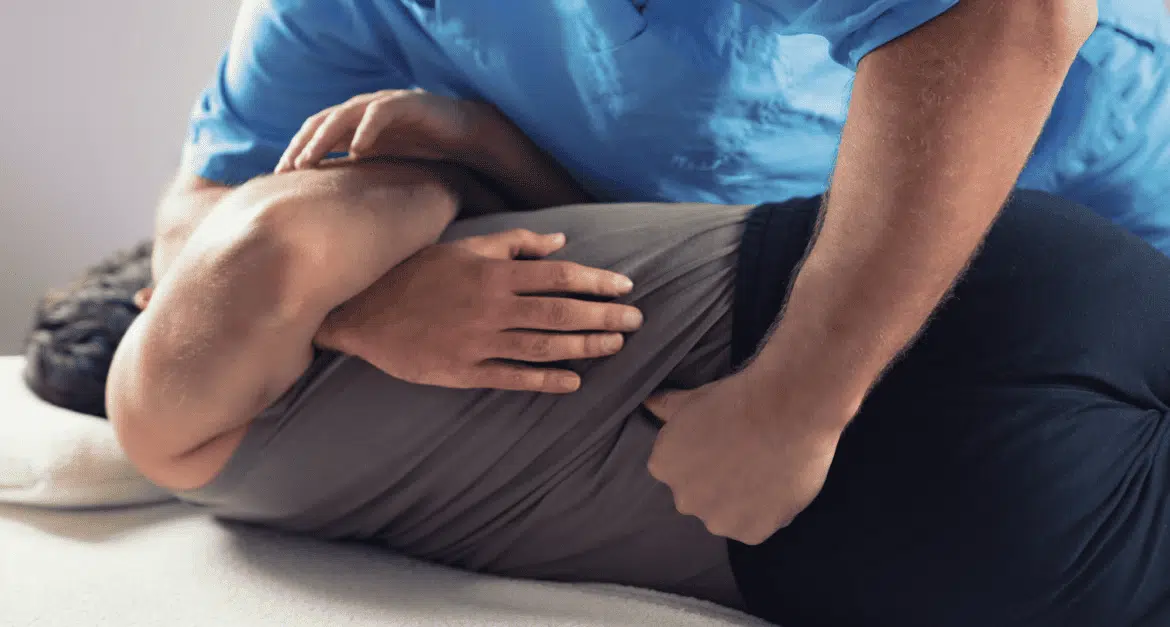Chiropractic Manipulation
The primary goal of chiropractic manipulation is to restore normal joint motion, particularly to areas of the spine and extremities. When a joint is unable to move freely, pain, inflammation, and muscle spasms can result. Recognizing chiropractic manipulation symptoms is crucial for identifying issues that may need treatment. There are three common ways that joints may become restricted:
– Over-activity or injury can restrict joint movement by causing muscles to retain a state of continual contraction.
– Joints are lined with cartilage that may become entrapped between the two joint surfaces preventing normal movement.
– Adhesions and scar tissue can develop around the joint and restrict normal movement. This can be a result of trauma, inflammation, immobilization, or degenerative joint disease.
Joint manipulation is a highly controlled, impulse-like movement across the joint to separate the two surfaces. Joint mobilization is similar to manipulation but entails oscillations or tractional movements that coax movement. Each of these chiropractic manipulation treatments can correct joint function, increase or restore joint mobility, and decrease muscle tone around the joint. These procedures are adapted to meet the specific needs of each patient.
Frequently Asked Questions
We are in-network with Medicare Part B and the Veterans Community Care Program.
We will provide you with a super bill so you can take advantage of any out-of-network benefits your plan may offer, and your carrier will reimburse you directly.
A thorough medical health history will be taken which is followed by a physical exam. Your doctor will watch you perform various activities such as walking, stepping off a step, standing on one leg, reaching overhead, and others. You may be asked to perform a few simple exercises to see how your body stabilizes. The doctor will also extensively assess your joints and muscles to find which ones may need treatment. After discussing what was found on the examination, treatment options will be discussed. If no red flags are present, an initial treatment may be performed at the discretion of the doctor. There may be instances where imaging will be requested prior to beginning a trial of care. If we do not think we can help you or that you will benefit from another specialist, we will refer you to the appropriate provider.
The initial visit is approximately 40 minutes during which you can expect a detailed history, examination, and treatment. Subsequent visits vary in length from 20 to 60 minutes depending on your condition and specific needs.
No, we do not believe in long-term care plans or pre-pay plans. Our goal is to reduce your pain and get you back to your activity as fast as possible. Most patients experience significant relief or resolution in 8 visits or less. We are happy to help each patient reach their maximum potential but this is always at the patient's discretion.
X-rays may be recommended for some individuals. Referrals are made at the discretion of the clinician and are based on the specifics of the case. Imaging is typically performed following a trauma, for cases that are slow to respond to care, or if any red flags are present during the initial history and exam.
No, you do not have to have your back or neck “cracked”. Your provider will make a recommendation for the best care possible, which may or may not include a manipulation. Still, we will not perform any treatment that you are not comfortable with. We also offer several gentle and low-force alternatives to the standard manual manipulation that can make patients more comfortable and still retain the benefits.
The pop is known as cavitation and is caused by the release of gas. When a joint is gapped, dissolved gas in the synovial fluid forms a bubble and then collapses. This phenomenon is similar to opening the cap of a carbonated beverage and has recently been witnessed during MRI studies. The sound is not caused by bones being put back into place or aligned, this does not happen. Check out this video for more info.
Please wear comfortable clothing that allows you to move freely. Our treatments are frequently active for the patient and we want to maximize our time during each visit.

